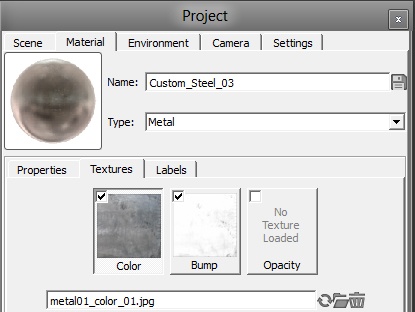

Keyshot pro 11.2.1, Blender 3.4, latest SimpleScifi/Flex pro add-on for Blender. So what could be the solution specifically for my "Simple Scifi/Flex (I use flex)"-problem and what would be the solution in general to keep material/textures for transfer to Keyshot? Or is there some "create an UV-Map from mesh, generate map from it and use it in UV/BOX mode later in Keyshot? Also FBX doesn't do a good job, because Keyshot "freezes" when it comes to load it in then. We recommend using the advanced material in Keyshot as it exports more consistently. I also don't know any other workflow (like transferring it into another format at all or just "do some apply action"). This ensures a quick high, fidelity export.

It enables you to quickly apply materials and lighting and provides the most accurate appearances of materials and lighting in the real world, all in a powerful interface that provides advanced capabilities and the ability to see all your changes in real time. The new Aversis environments are located in the Indoor and Outdoor Environments folders. KeyShot is designed to facilitate 3D rendering and animation. The new resources will be added to your KeyShot Resource folder and visible in your KeyShot library.
Keyshot textures mac#
in the material tab the tree texture has the correct path to the texture but it is. MATERIALS/TEXTURES ENVIRONMENTS Windows Installer Mac Installer Content Installation After downloading, run the installer. I tried saving as a bip file and as a package, but once I close keyshot and re open to continue work, all of the textures from that tree will not load. BUT I cannot transfer materials/textures via the Bridge. I have a scene and import a cgaxis tree with textures from an external hard drive. After making the instances real there seems to be no Problem. After several days of reseach I decided to start with "Simple SciFi/Flex" (pro version) and got some decend results. I was looking for some "help" to make huge city scenes with low to medium detail. I came from CAD and use Keyshot, Zbrush, Adobe products and so on for years now. The Poliigon textures used for the materials in the installer can only be used inside KeyShot, if you need the textures for other purposes, visit the Poliigon Textured Materials page for a list of textures used.I'm quite new to Blender but not to 3D at all. The installer contains high-quality materials with textures from Poliigon that have been excluded form the regular Keyshot installer because of their size. Additional MaterialsĪ KeyShot Content installer is available for KeyShot 10 users on both Windows and Mac. You can access KeyShot Cloud from the far left side of the KeyShot Toolbar or at. Ive tried two separate methods that fail in two different ways: (1) The first method I tried was to save my seamless jpeg texture to my desktop.

Thousands of KeyShot materials generated by Luxion, KeyShot partners and KeyShot users are available on KeyShot Cloud. Most of the materials that we are going tousearealready provided by KeyShot, so I recommend experimenting with different textures and parameters to see what. Open submenu (3D-Models and scenes )3D-Models and scenes Open submenu (HDRI )HDRI Open submenu (Textures )Textures Open submenu (KeyShot )KeyShot. Ive got a modeled set-piece Im trying to texture, but when I attempt to load my personal textures, it wont work.

When importing into the library directly, select the folder you want to import into, press the Import icon and select the file you want to import. You can import materials into the library directly (MTL, KMP, AxF and U3M) or use the Material Importer in the Tools section. Exposed Headless Scripting Functionality There are 50 high quality materials included in Essential Keyshot Materials, with over 130 different variations This includes plastics, metals, rubbers.Best Practices for 3MF Export for 3D Printing.Best Practices for Sharing and Embedding USDz and GLB Files.
Keyshot textures license#
License Server Installation (PC) - Custom.Client Error: Unsupported KeyShot Version.Server Error: Invalid Mac Address (HostID).


 0 kommentar(er)
0 kommentar(er)
